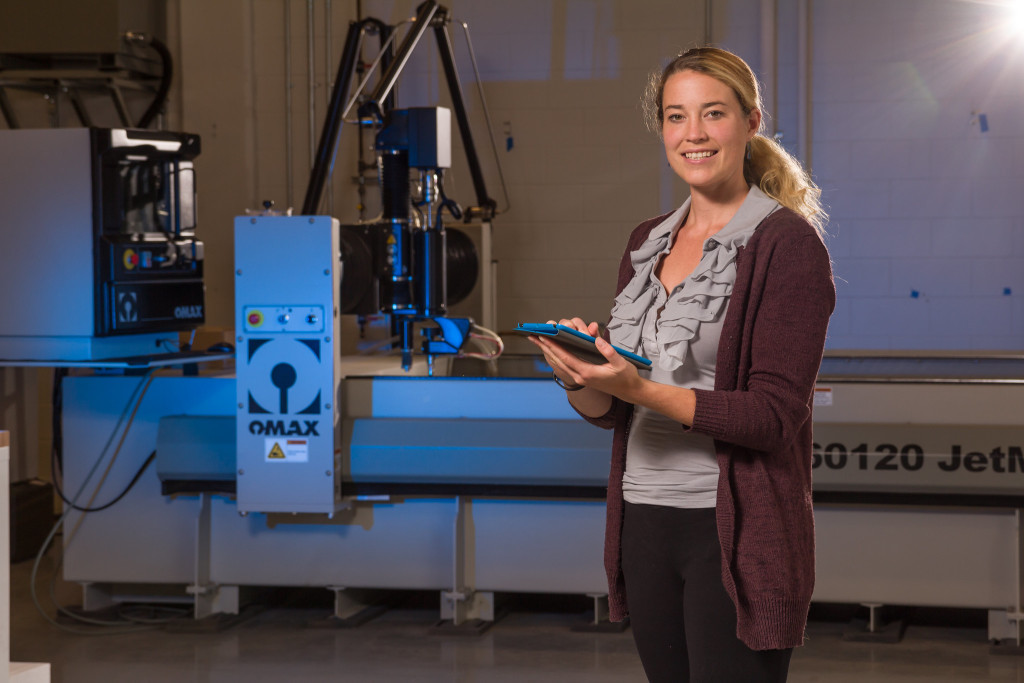Camosun College has emerged as a top regional leader in applied research and innovation.

Updated: October 19, 2017
“It sets us apart from other institutions and we’ve made it a top priority for the continued transformation of the college going forward,” he notes. Walzak believes that applied research is key to Camosun’s success in supporting local industry and it is already serving as a dynamic catalyst of innovation throughout the region. “We know that technology is changing very rapidly in today’s workplace and we want to make sure that Camosun’s curriculum reflects those rapidly changing opportunities.”
Camosun Innovates uses cutting edge technology such as 3D printers, robotic systems, and 3D scanners to allow faculty and students from different disciplines to turn their ideas into reality. With the emphasis on applied research, the college is well positioned as a regional research and development hub that supports a network of local small and medium sized businesses on the island. “We’re doing that by bringing exciting real world problems into the classroom,” says Walzak. “This allows our students the hands-on opportunity to solve those problems, and then in the meantime, develop the soft skills required to work as teams in the workplace. It’s interdisciplinary and it’s focused on results.”
Camosun Innovates receives funding from national bodies including the Natural Sciences and Engineering Research Council (NSERC) and Western Economic Diversification Canada (WED). Working with local industry, Camosun Innovates provides research services including industrial prototyping, innovations for athletes of diverse abilities, environmental protection, and technology to streamline business processes—all helping local industry prosper. The result is marketplace innovation, improved human performance, enhanced economic diversity, and social innovation.
Underlying the importance that Camosun places on applied research, each year during the June graduation ceremonies, the college honours an individual or organization for innovation. This year’s Board of Governors Award for Innovation recipient is Mechanical Engineering Technology student Ben Costin. He worked with local company Ocean Rodeo to develop a ground-breaking new control bar for the global kiteboarding industry.
“Ben is one of those unique individuals who creates his own path. And so the whole time Ben has worked with us he’s come up with new ideas,” says Walzak. “If I could capture what Ben has done and multiply that over just about every other student here at Camosun—that’s our vision at Camosun Innovates.”
Costin notes that his role in developing the new bar was varied and the work was intense. “Basically, my job was to test these bars and make sure they were going to be as strong and as light as they could be,” he says. “That involved using a tensile tester, doing construction testing, loading these things up way beyond what they would ever see from a rider, and then seeing how these things were breaking. And then giving advice on how they were made in order to make them stronger.” The result is a market-ready finished product that is the first of its kind in the global kiteboarding industry. “This is an absolute game-changer in terms of comfort, safety, and performance on the water,” says Costin.
“Ben is a dedicated, hardworking, and very intelligent employee,” says Ocean Rodeo Product Designer Alastair Wood. “He offers insights and solutions in areas that are valuable to our company.” Ocean Rodeo is pleased with its collaboration with the college. “Working with Camosun has been valuable to us because it enables us to have access to machinery and expertise that we would otherwise have no affordable means of accessing. It allows us to accurately test and quantify ideas in a controlled and reliable manner.”
Costin was nominated for the innovation award by Jamie VanDenbossche, Camosun’s Manager of Applied Research, who also chairs the British Columbia Applied Research & Innovation Network (BCARIN). “We had a big push this year to do advocacy work,” he says. “BCARIN is working to help move applied research in colleges to be more recognized and to receive funding from the provincial government. From a policy perspective, we’d like to see the government recognize that applied research supports colleges’ mandate of teaching. Often universities overshadow colleges in this area, but I think that people are starting to realize that colleges are doing really interesting and vital work in applied research. The results are starting to speak for themselves.”
To further enable local industry and business, Camosun Innovates activities are headquartered at Camosun’s high tech Enterprise Point facility at the Interurban campus, a one-stop portal into Camosun's broad spectrum of professional services [moved to Babcock Canada Interaction Lab, effective August 2017]. Through Enterprise Point, Camosun supports a multitude of business and industry clients working towards improved productivity and a greater capacity for innovation. Walzak notes that Camosun is firing on all cylinders and has gained a lot of momentum going forward with the right mix of funding, leadership, infrastructure, and industry support coming into place.
Last year, Camosun officially opened a brand new $30 million Centre for Trades Education and Innovation (CTEI) and recently announced exciting plans for a $43.5 million new Health Sciences Centre, both at Camosun’s Interurban campus. A former trades workshop space at Interurban’s Jack White building has been transformed into the sparkling new Interaction Lab where equipment and collaborative activities will be consolidated. The lab is being supported by a major investment by industry partner Babcock Canada.
Already, Camosun is home to the largest college-based applied research centre west of Winnipeg, notes VanDenbossche, and that helps to attract students and faculty who are looking for more than theory when learning or teaching about manufacturing, engineering, and computer technologies.
“Our vision is to allow students, particularly interdisciplinary teams of students, to work on solutions,” says Walzak. “This gives them the real world skills they need when they go out into the employment world as well as providing unique opportunities for companies to gain new access to new product ideas, new technology, and new employees. It’s a win-win for the college and local industry.”
Contact information
Dr. Tim Walzak
Director, Camosun InnovatesCamosun College

